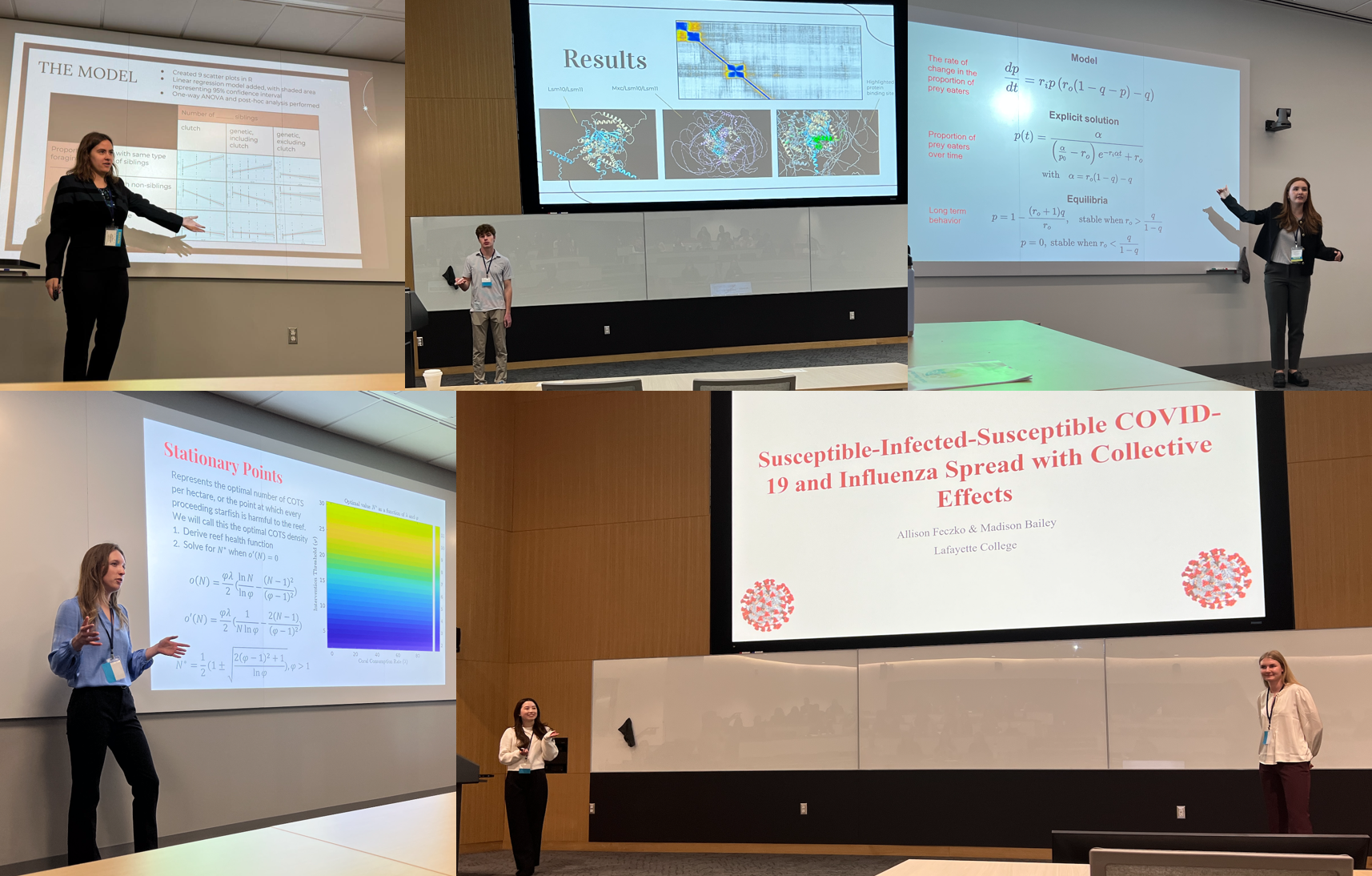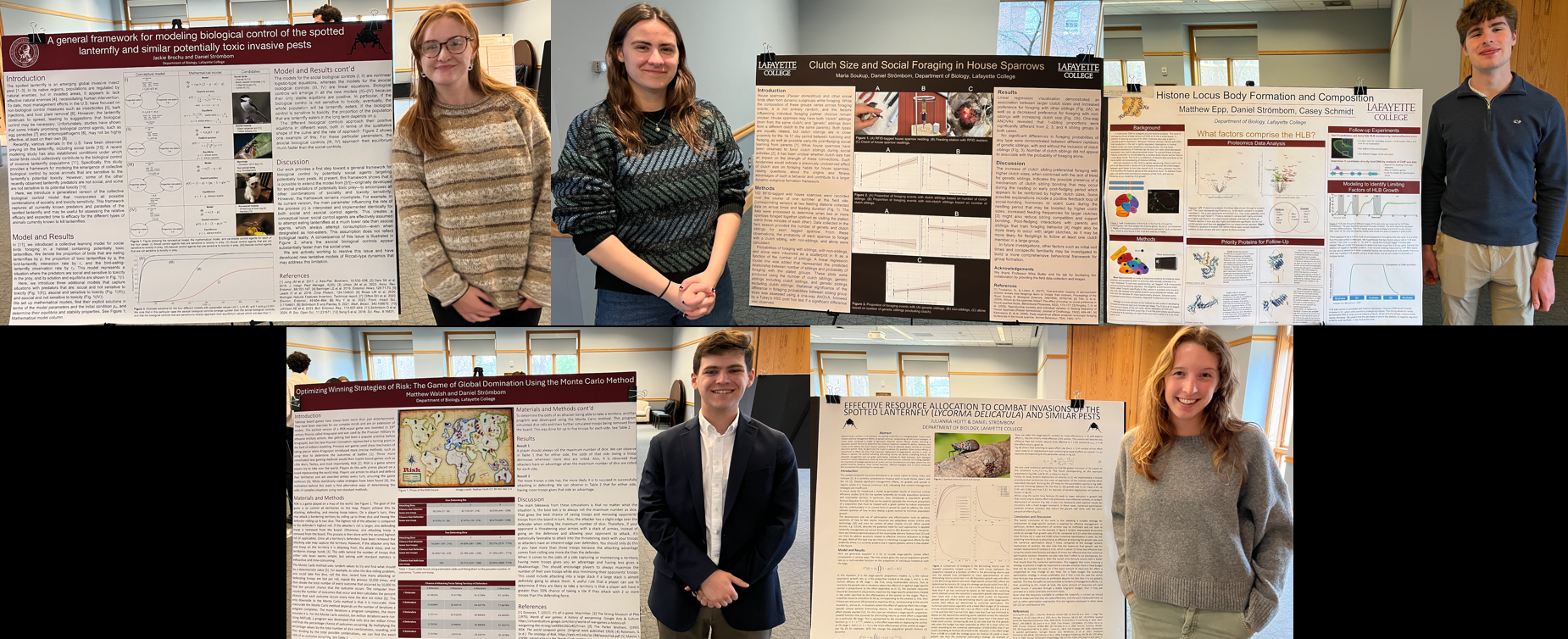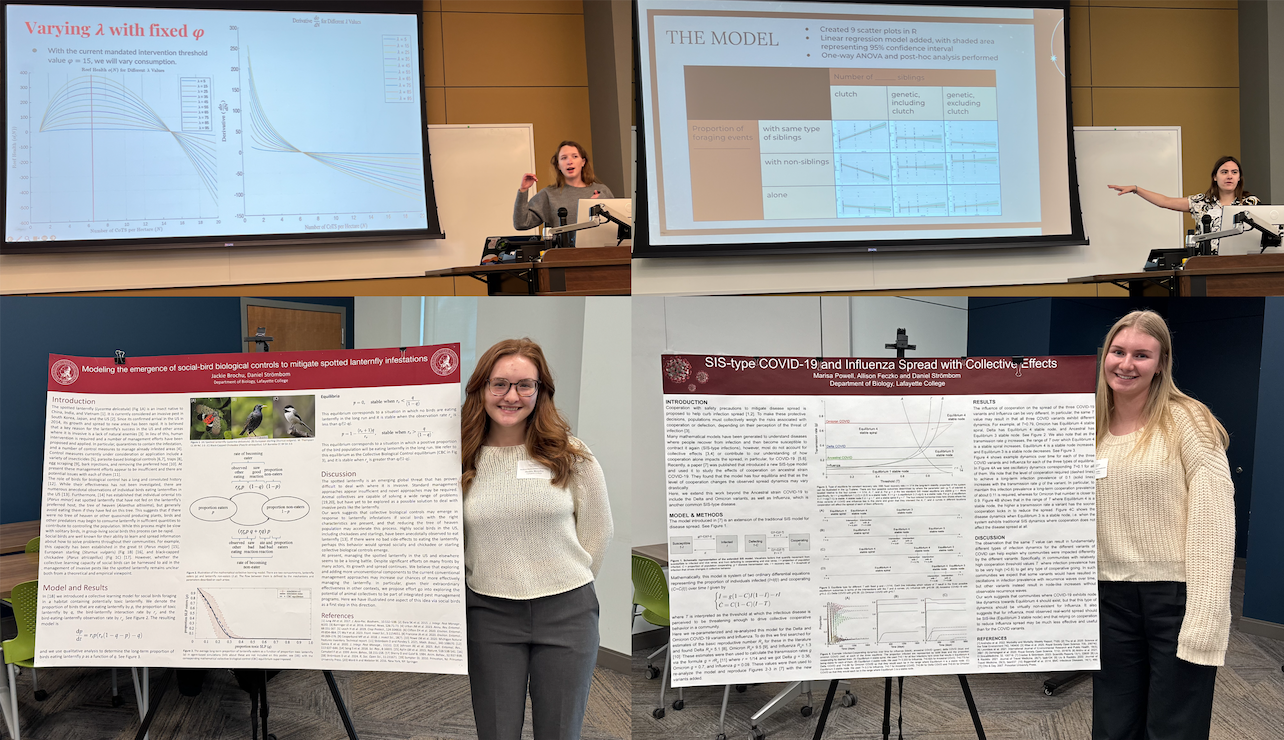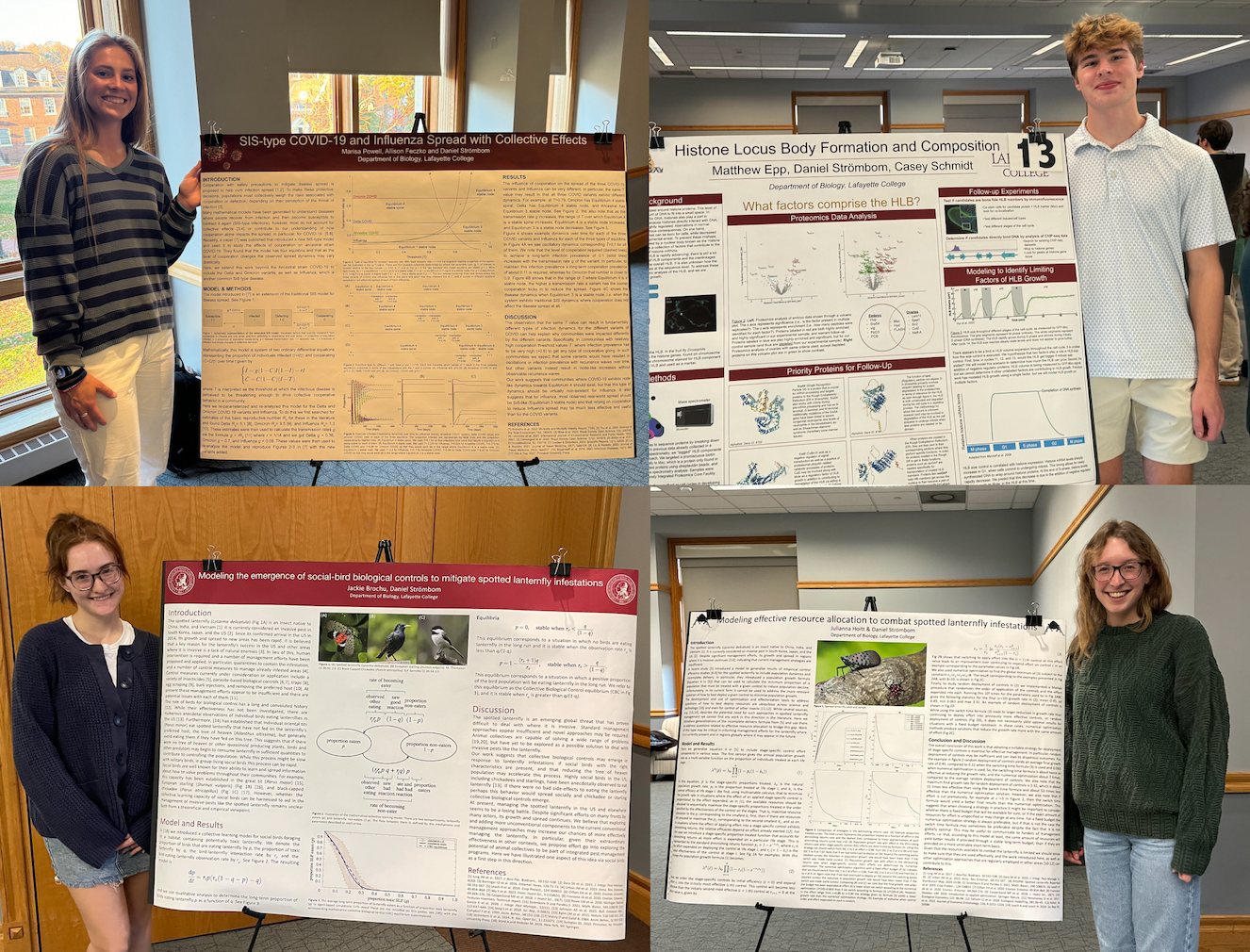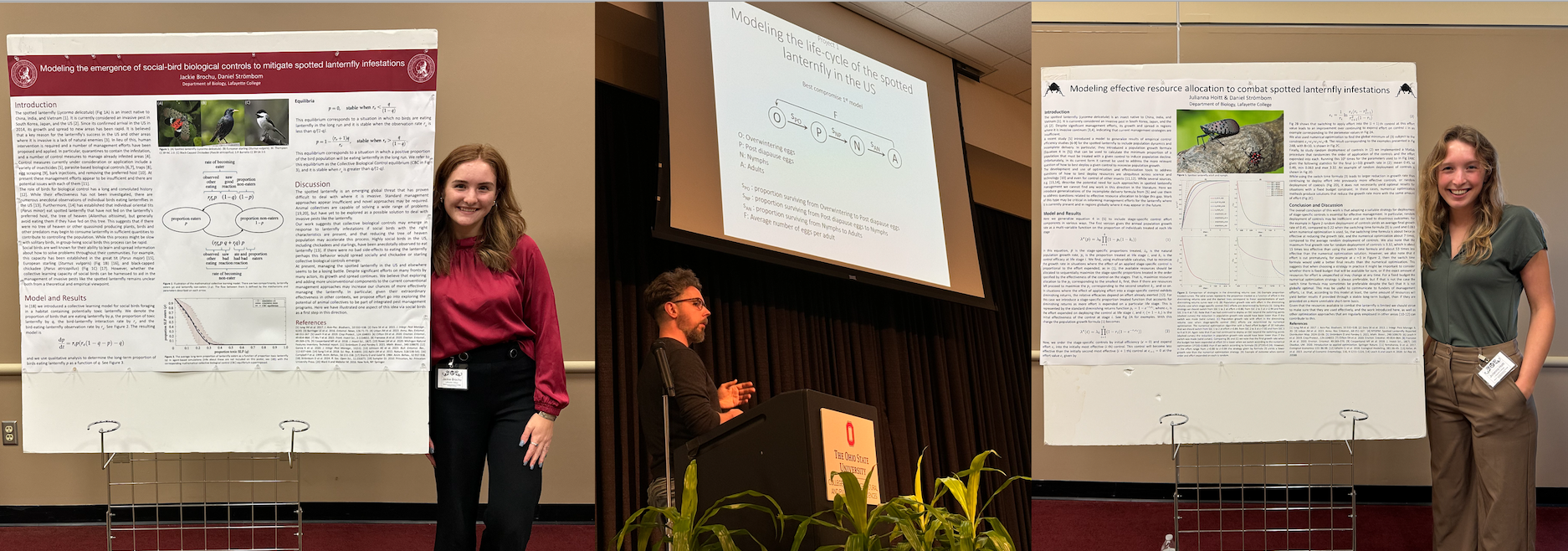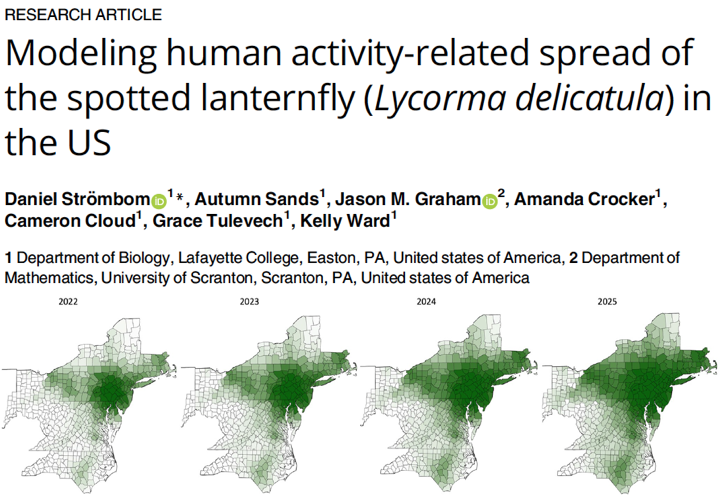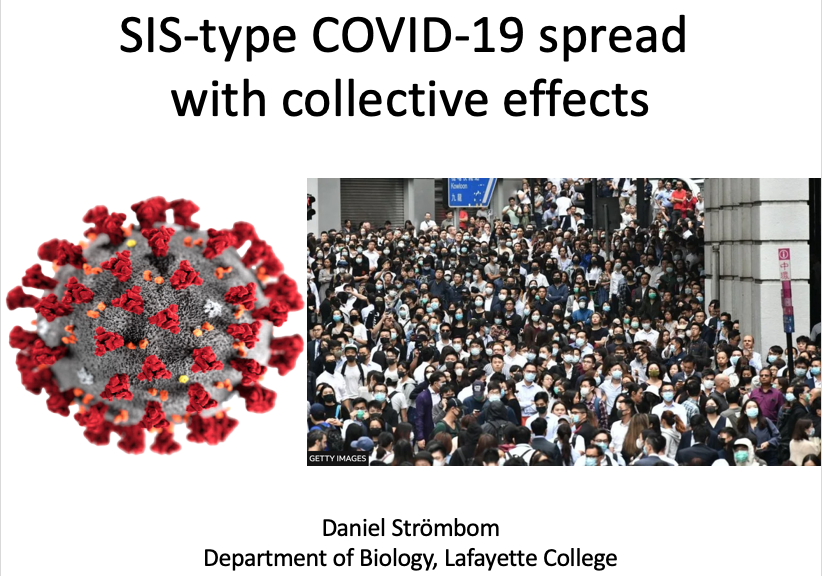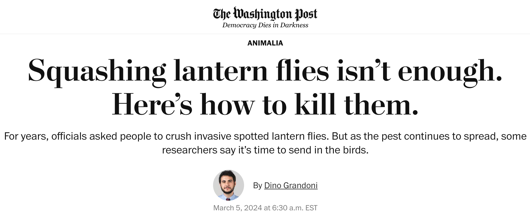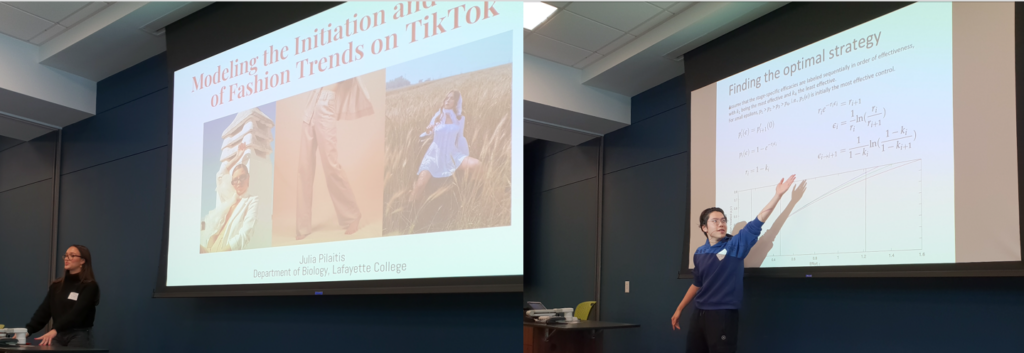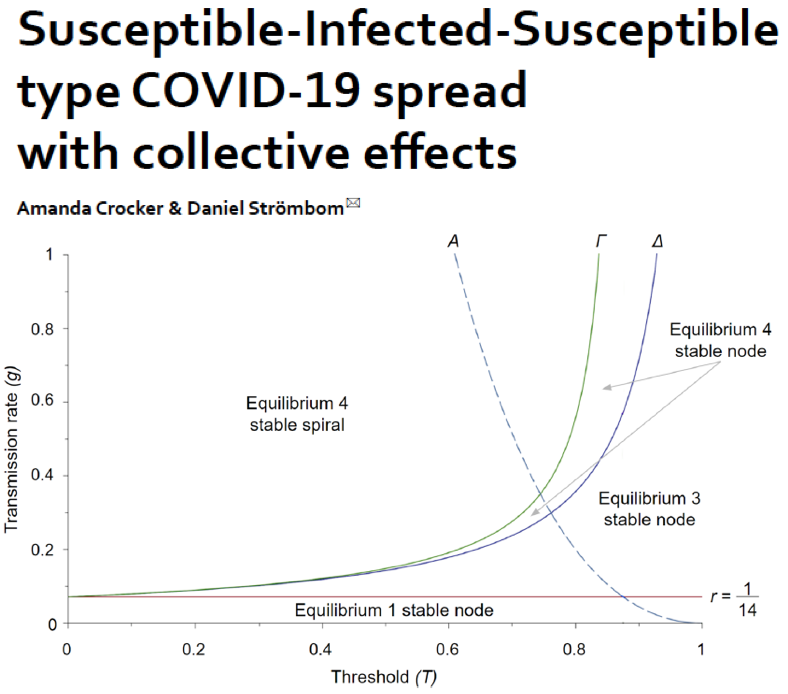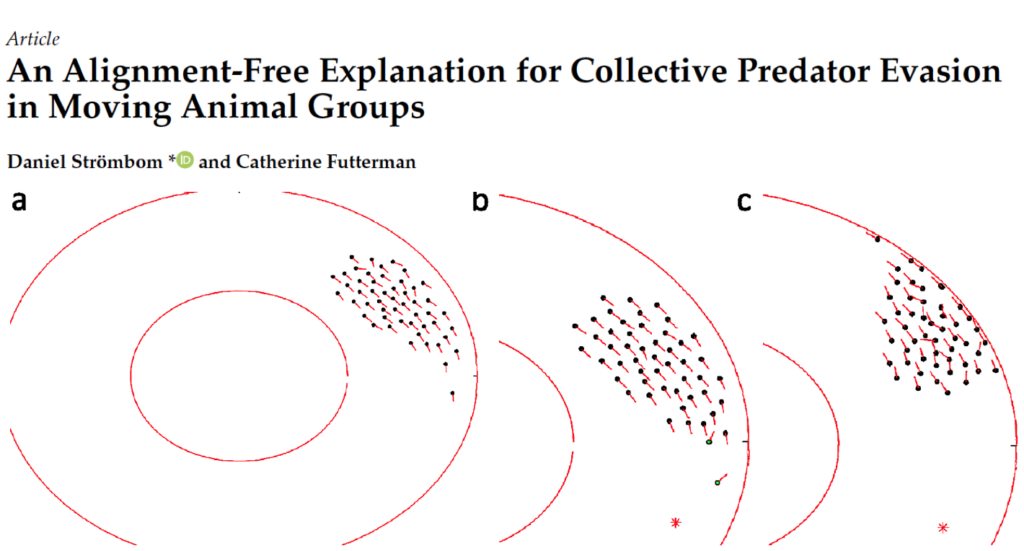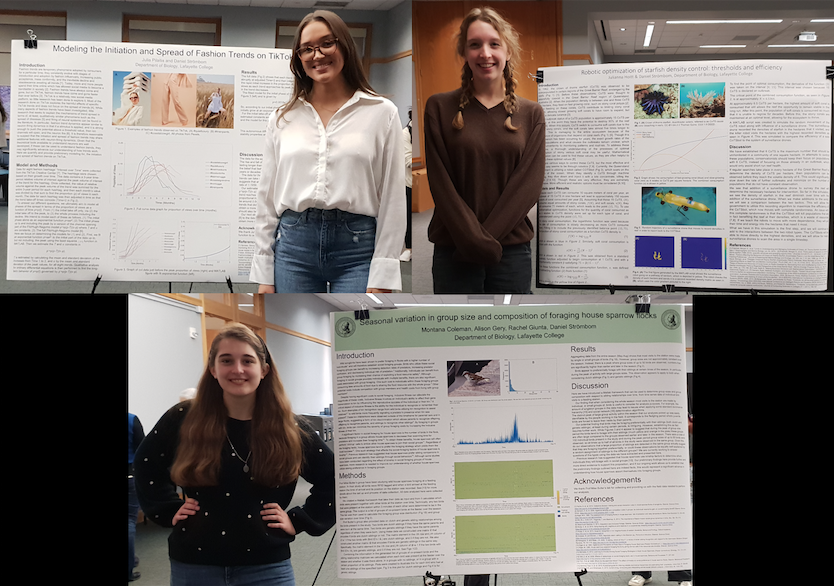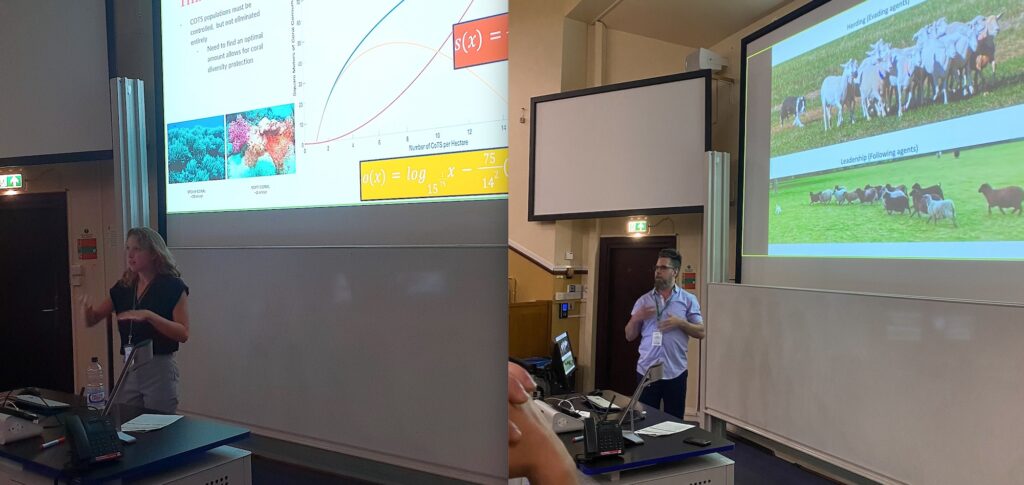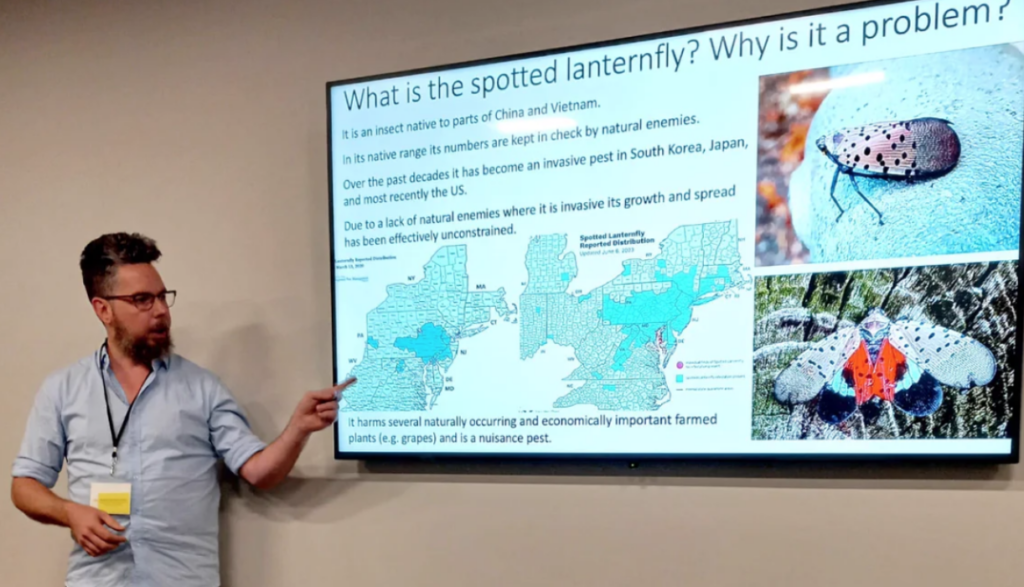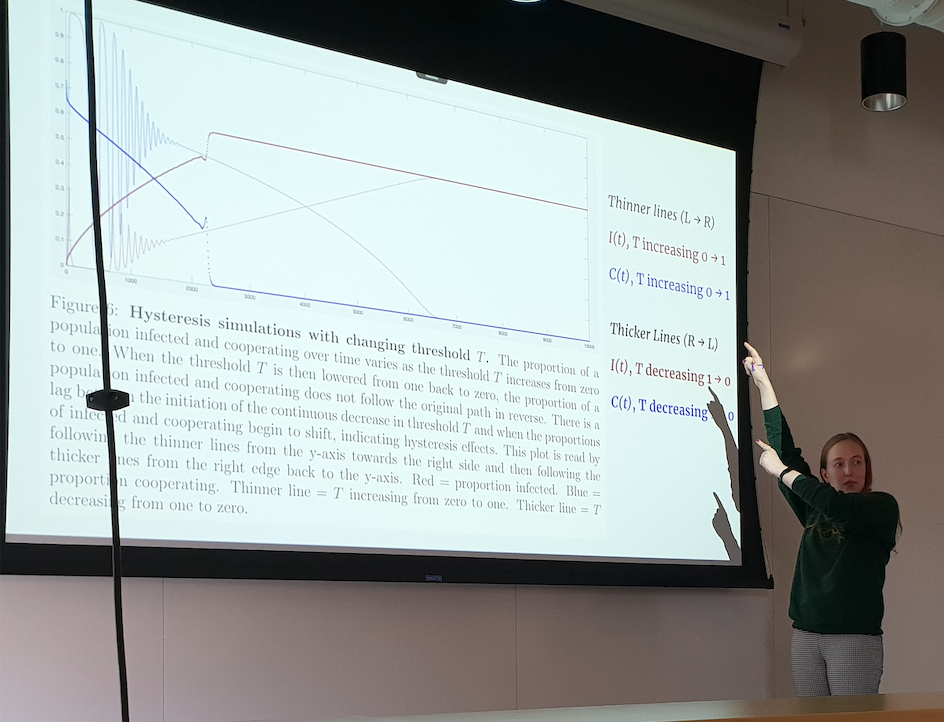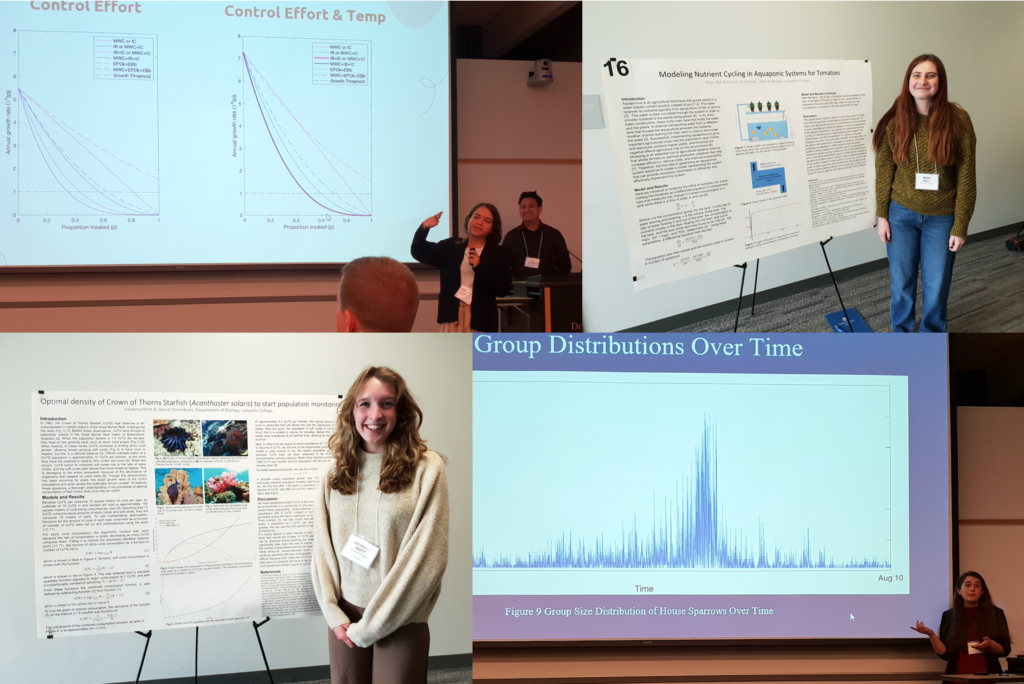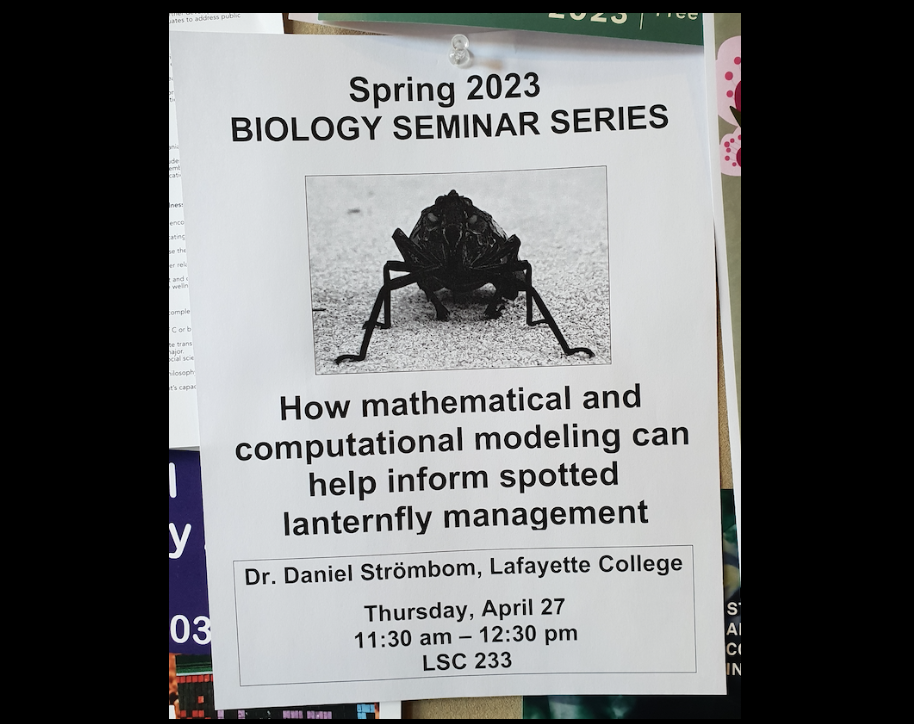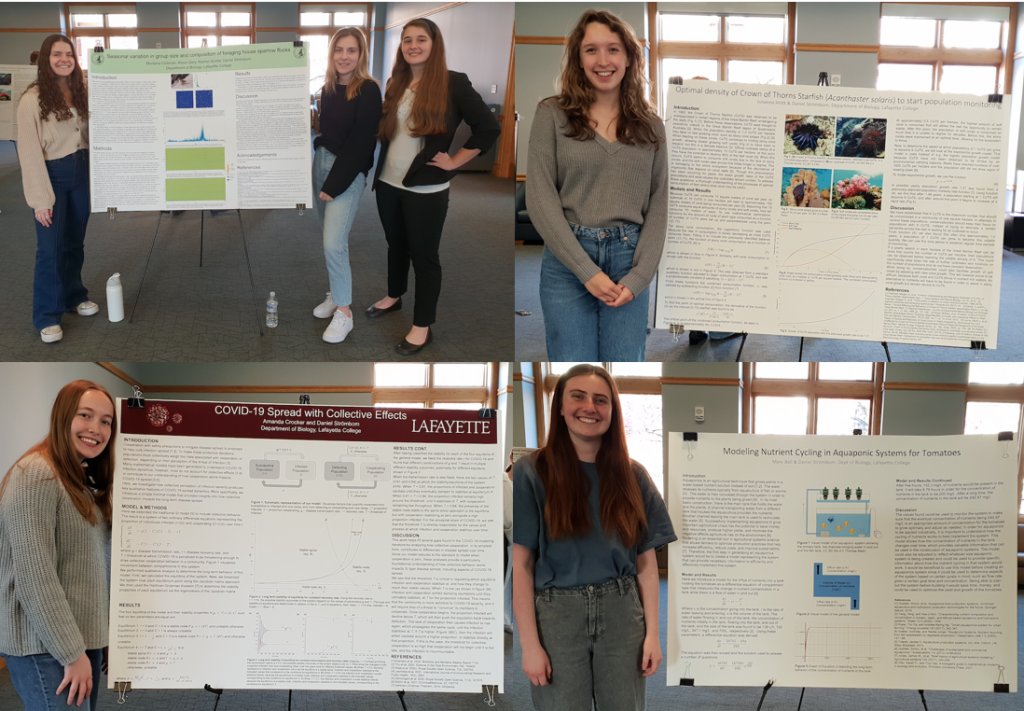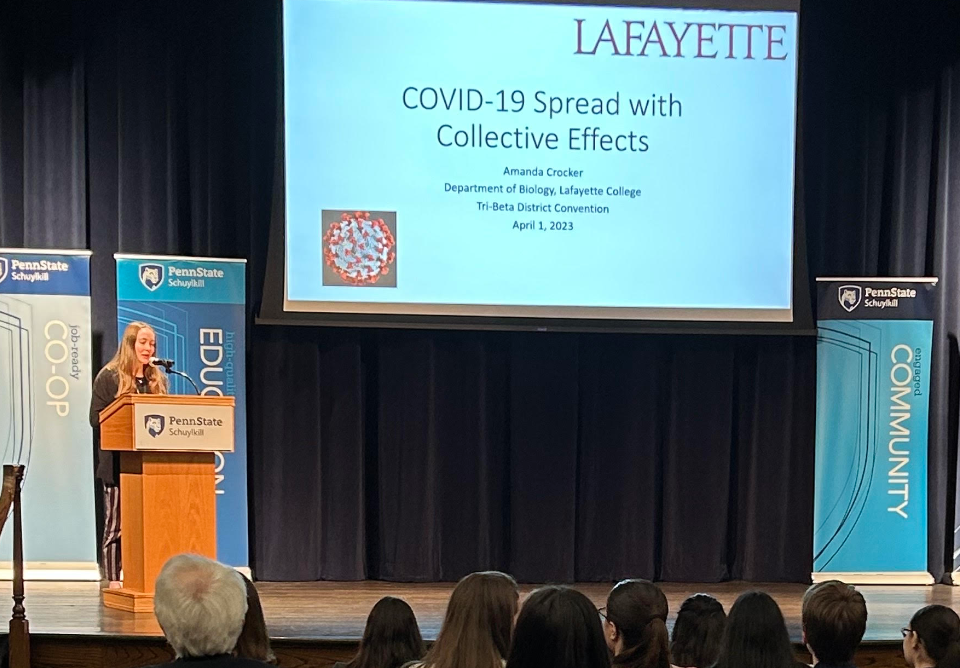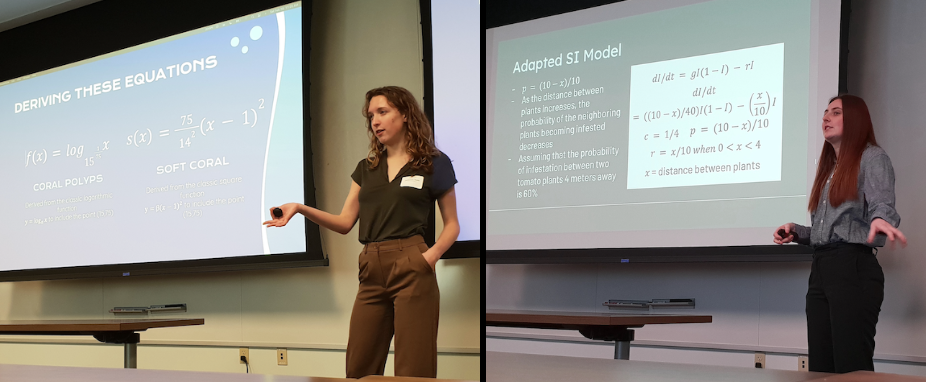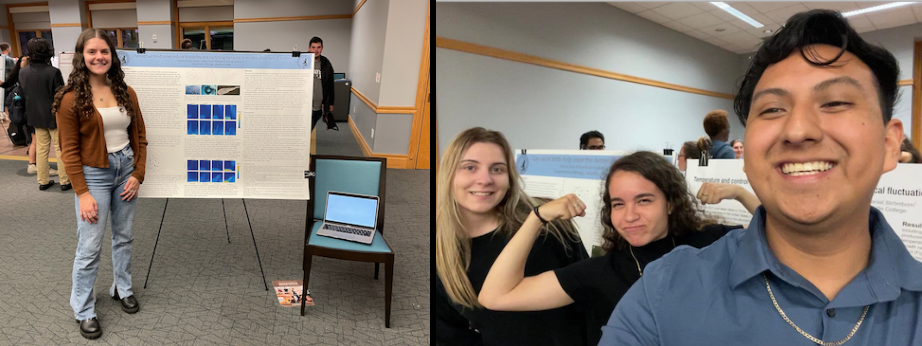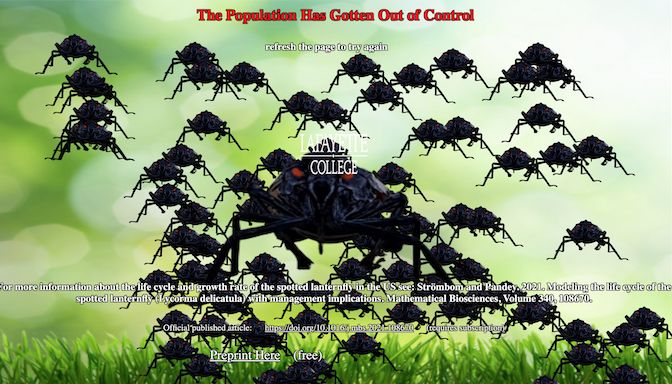We are using theoretical approaches to understand the life-cycle, population growth, local spread of, and how to effectively manage the invasive Spotted Lanternfly in the US and elsewhere. In summer 2021 we published a journal article where mathematical modeling and published data are used to estimate the US population growth rate, and assesses the efficacy of a number of proposed control measures under population dynamics and incomplete delivery. This contains the first published model of lanternfly population dynamics, first population growth estimate, and mechanistically introduces incomplete delivery of control measure into a population dynamics framework of this type. The information acquired here may be directly important for making management decisions. In particular, since our work suggests that the annual growth rate is approximately 5.47, that only 3 of 6 controls found to have been assessed for efficacy in the literature may induce population decline if we can find and treat all available lanternfly in all its stages, and that even if we have a control that kills 100% of treated lanternfly we need to treat at least 35% of the available lanternfly in all stages to induce even the slightest population decline. This is likely impossible over larger geographical scales. So, we conclude that more knowledge about its pathways of spread, and novel ideas for combating it where it already exists, are likely necessary to deal with it effectively. We are committed to contribute to this and are currently working on a number of projects with the overall goal of obtaining information that can be used to facilitate management of the current US infestation, but also in preparation for future infestations globally which has been forecasted by others.
OUR WORK
Journal articles (* Lafayette student coauthor)
- D Strömbom, J Hoitt*, J Hu*, S Pandey*, E Batchelar*. 2025. Effective resource allocation to combat invasions of the spotted lanternfly (Lycorma delicatula) and similar pests. Mathematics 13(18):2952. Paper: https://doi.org/10.3390/math13182952
- D Strömbom, A Sands*, JM Graham, A Crocker*, C Cloud*, G Tulevech*, K Ward*. 2024. Modelling human activity-related spread of the spotted lanternfly (Lycorma delicatula) in the US. PLoS ONE 19(8): e0307754. Paper: https://doi.org/10.1371/journal.pone.0307754
- D Strömbom, A Crocker*, A Gery*, G Tulevech*, A Sands*, K Ward*, S Pandey*. 2024. Modelling the emergence of social-bird biological controls to mitigate invasions of the spotted lanternfly and similar invasive pests. Royal Society Open Science 11: 231671. Paper: https://doi.org/10.1098/rsos.231671
- D Strömbom and S Pandey*. 2021. Modeling the life cycle of the spotted lanternfly (Lycorma delicatula) with management implications. Mathematical Biosciences 240, 108670. Official Paper. Preprint.
Presentations
J Brochu. A general framework for modelling biological control of the spotted lanternfly and similar potentially toxic invasive pests. Lehigh Valley Ecology and Evolution Seminar 2025.
J Brochu. A general framework for modelling biological control of the spotted lanternfly and similar potentially toxic invasive pests. 100th Pennsylvania Academy of Science Meeting 2025.
J Hoitt. Effective Resource Allocation to Combat Invasions of Spotted Lanternfly and Similar Pests. Lafayette’s Spring 2025 Student Poster Research Session.
J Brochu. A general framework for modelling biological control of the spotted lanternfly and similar potentially toxic invasive pests. Lafayette’s Spring 2025 Student Poster Research Session.
J Brochu. Modeling the Emergence of Social-Bird Biological Controls to Mitigate SLF Infestations. The 39th Annual Moravian Student Mathematics Conference. Moravian University.
J Hoitt. Effective Resource Allocation to Combat Invasions of Spotted Lanternfly and Similar. Undergraduate Research at the Capitol-Pennsylvania 2025.
J Brochu. Modeling the Emergence of Social-Bird Biological Controls to Mitigate SLF Infestations. Lafayette’s Fall 2024 Student Poster Research Session.
J Hoitt. Modeling Optimal Resource Allocation to Combat Spotted Lanternfly Infestations. Lafayette’s Fall 2024 Student Poster Research Session.
J Brochu. Modeling the Emergence of Social-Bird Biological Controls to Mitigate SLF Infestations. 2024 Spotted Lanternfly Research and Technology Development Meeting. Wooster, OH.
J Hoitt. Modeling Optimal Resource Allocation to Combat Spotted Lanternfly Infestations. 2024 Spotted Lanternfly Research and Technology Development Meeting. Wooster, OH.
D Strömbom. Modeling the Life-Cycle and Spread of the Spotted Lanternfly in the US. 2024 Spotted Lanternfly Research and Technology Development Meeting. Wooster, OH.
J Hu. Optimal resource allocation to combat spotted lanternfly infestations. 2024. The 99th Annual Pennsylvania Academy of Science Meeting. Messiah University.
J Hu. Optimal resource allocation to combat spotted lanternfly infestations. 2024. The 38th Annual Student Mathematics Conference. Moravian University.
D Strömbom. Facilitating the emergence of collective biological controls to combat the Spotted Lanternfly and similar invasive pests. 2023 Annual meeting of the Society for Mathematical Biology. Columbus, OH.
D Strömbom. How modelling can help inform spotted lanternfly management. 2023. Dept. of Biology. University of Scranton, Scranton, PA, USA.
C Cloud & L Tapia. Temperature and control effort variability may explain annual local fluctuations in lanternfly abundance. Lehigh Valley Ecology and Evolution Seminar 2023. DeSales University.
C Cloud & L Tapia. Temperature and control effort variability may explain annual local fluctuations in lanternfly abundance. Lafayette’s Fall 2022 Student Research Poster Session.
A Gery. Can Social Birds be a Solution to the Lanternfly Problem? Lafayette’s Fall 2022 Student Research Poster Session.
S Pandey. Modeling the life cycle of the spotted lanternfly (Lycorma delicatula) with management implications. National Conference on Undergraduate Research. 2022.
D Strömbom. Modeling the life cycle and spread of the spotted lanternfly with management implications. Department of Mathematics. Muhlenberg College, Allentown, PA, USA. 2022.
A Sands. Modeling the local spread of the spotted lanternfly in the US. Poster. 97th Annual Pennsylvania Academy of Sciences meeting. 2022.
A Crocker. Spotted lanternfly infestation is associated with tree of heaven presence in the US. 97th Annual Pennsylvania Academy of Sciences meeting. 2022.
C Cloud. Stop the Spread: The Lanternfly Game. Poster. Lafayette’s Fall 2021 Student Research Poster Session.
A Crocker. Tree of heaven presence is associated with spotted lanternfly infestation in the US. Lafayette’s Fall 2021 Student Research Poster Session.
S Pandey. Modeling the life cycle of the spotted lanternfly with management implications. Lafayette’s Fall 2020 Virtual Student Poster Session.
A Sands. Modeling the local spread of the spotted lanternfly in the US. Lafayette’s Fall 2020 Virtual Student Poster Session.
Miscellaneous
Our Lanternfly Game. Play at https://lafcollanternflies.github.io/
Biological Modeling (BIOL285) lab for exploring the SLF model in Strömbom & Pandey 2021 using WolframAlpha.
MEDIA COVERAGE (Selected)
Squashing lantern flies isn’t enough. Here’s how to kill them. 3/5/2024. https://www.washingtonpost.com/climate-environment/2024/03/04/spotted-lantern-flies-how-to-stop/
In the Lanternfly War, Some Take the Bug’s Side. 8/21/2022. https://www.nytimes.com/2022/08/21/nyregion/lanternfly-bugs.html
Spotted Lanternfly ‘going to keep just multiplying’ Lafayette researchers say. 8/22/2021. https://www.lehighvalleylive.com/news/2021/08/spotted-lanternfly-going-to-keep-just-multiplying-lafayette-researchers-say.html
NJ squashed thousands of spotted lanternflies. Still, it’s ‘impossible to wipe them out’. 10/7/2021. https://www.northjersey.com/story/news/environment/2021/09/30/nj-spotted-lanternfly-egg-mass-impact/5883898001/
Bird photo: Bengt Nyman CC-BY-SA 4.0




